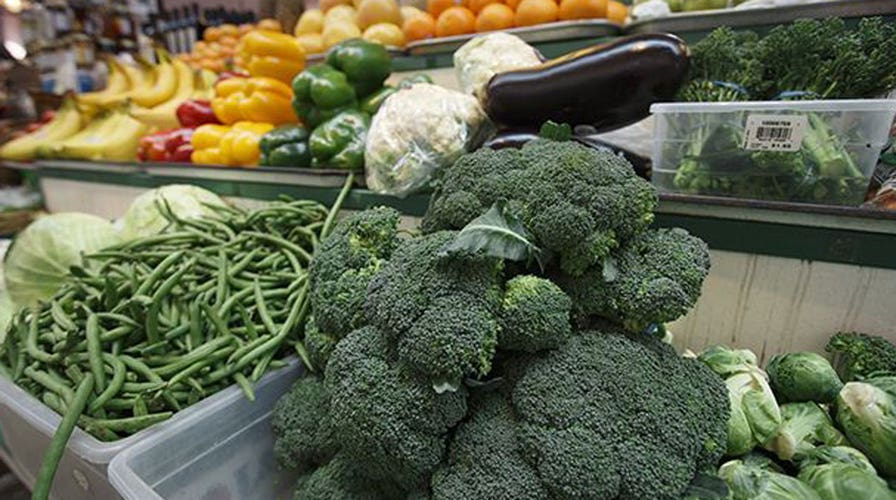New study shares troubling news about American diets
USDA reports diets lacking in needed nutrients; Dr. David Samadi and Dr. Marc Siegel weigh in on 'Sunday Housecall'
You’re baking a cake for Christmas and the “sell by” date stamped on the milk container is 12/20/2016; the “best if used by” date on the cake mix box is 12/20/2016; and the “use by” date on the egg carton is 12/20/2016.
Merry Christmas. Now what?
The U.S. Department of Agriculture knows that far too many people will trash all three items without checking to see if the products are actually spoiled, then run to the corner store to buy new ones — which means they’ll be spending good money to replace perfectly fine food that would have combined to make a perfectly fine cake.
NOW YOU CAN BUY LEFTOVER BUFFET FOOD FOR JUST $2
That’s a waste of money, but — even more importantly — it’s a waste of good food. And that’s why the USDA’s Food Safety and Inspection Service announced Wednesday that it's changing its guidance for food product labeling.
The federal government requires that expiration dates be stamped on one product only — infant formula. The “expiration” dates on all other products are established by the manufacturers — and their differing labels have proven very confusing to consumers.
Now, in hopes of cutting back on the estimated 30 percent of food that is lost or wasted at the retail and consumer level, the FSIS is encouraging food manufacturers and retailers to go with one label only: “Best If Used By.”
Research that consumers understand what those words mean: The food may lose some of its taste or consistency after the date, but it most likely will be safe to eat.
“In an effort to reduce food loss and waste, these changes will give consumers clear and consistent information when it comes to date labeling on the food they buy,” Al Almanza, USDA deputy undersecretary for food safety, said in a press release. “This new guidance can help consumers save money and curb the amount of wholesome food going in the trash.”
The new guidance will make it easier for those who choose not to sell or eat the “expired” food to donate it to food pantries, too.
So how can you tell if the food that has passed its “Best if Used By” date is still good to eat?
The nose knows.
“Our bodies are well equipped to detect when food is spoiled,” Dana Gunders, a senior scientist at the Natural Resources Defense Council, an advocacy group, told the New York Times. “The food will taste funny or smell bad, or look slimy.”
CANADIAN WALMART CAUGHT TRASHING UNOPENED FRESH FOOD AND WATER BOTTLES
So if it’s a pasteurized dairy product like milk or cottage cheese, smell it. If it smells good, it’s good.
The same goes for beef, chicken and pork. If they smell good, they’re good. If they smell bad or look slimy, throw them out.
If your eggs have passed the “expiration date,” drop them one at a time in a glass of water. If it floats, it’s garbage-bound. But if it sinks, make an omelet.
If the food has mold, dump it. Some types of mold can produce toxins.
But not so fast, if it’s cheese. The Mayo Clinic notes that some cheeses, like Brie and Camembert, are made with mold, and are perfectly fine to eat.
And if you see mold on hard or semisoft cheeses like cheddar and Swiss, you can cut off the moldy part (at least one inch around it) and eat the rest.
But if you see mold in a soft cheese like cottage cheese, cream cheese or ricotta cheese, or in grated cheese, throw the whole thing out, because the mold can send threads through the entire product, and it may be toxic.

